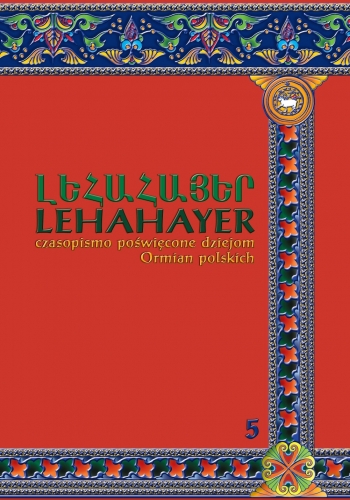Milites et nobiles: Ormianie a stan szlachecki Królestwa Polskiego i Wielkiego Księstwa Litewskiego od XIV do XVI wieku
Armenians and Noble Status in Kingdom of Poland and Great Duchy of Lithuania, 14th-16th Centuries
Author(s): Krzysztof StopkaSubject(s): 13th to 14th Centuries, 15th Century, 16th Century
Published by: KSIĘGARNIA AKADEMICKA Sp. z o.o.
Keywords: Armenians; nobility; social advancement; inter-religious marriages; Poland; Lithuania
Summary/Abstract: Armenians living in Kingdom of Poland and Great Duchy of Lithuania were mostly burghers, however, cases of social advancement were noted on Ruthenian territory officially belonging to the Crown. Initially, the advancement was possible only for royal court-based Armenian translators, but later also for those with merits for the country’s defence. Another way to advance socially was to marry a Polish nobleman. In such marriages religious differences rarely posed a serious problem; generally, females did not need to convert from their Christian Armenian denomination. Nevertheless, ennoblement was rarely attractive for Polish Armenians at that time; trade and other typically burgher activities brought more profit than the landownership privilege. For this reason ennobled men and their descendants often took on those activities anyway and pleaded their noble status only to escape inconvenient legal consequences or town court. A few Polish noble families of Armenian origin are dated back to that time: the Tyszkiewicz, the Siekierzyński, the Balicki, the Zwartowski, the Sołtanowicz-Chalepski, the Lenkowicz-Ipohorski, the Iwaszkiewicz, the Makarowicz, the Domażyrski, the Pleszkowski.
Journal: Lehahayer. Czasopismo poświęcone dziejom Ormian polskich
- Issue Year: 2018
- Issue No: 5
- Page Range: 15-106
- Page Count: 92
- Language: Polish

